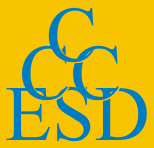The questionnaire is obviously linked to the History of the Council,
which see. In this document I will outline the origin, the development and some of the problems
faced in collecting and analysing the data.
THE REASONS.
Whatever is collected is at the Council's direction; the collection was started in the 1973/
1974 academic year when the major concern was about the number of students registered in the three
levels (B.Sc., M.Sc., Ph.D.) of program and the faculty and staff needed to support them (see
History of the Council for earlier efforts of systematic data collecting in Ontario). Later, starting with the
1979/1980 year, it was decided to collect information about the number of people registered in
service courses and then, starting with the 1984/1985 year, about the number of people who
graduated at each degree level and their areas of expertise. In the early 1990s attempts were made
to obtain a more complete picture by collecting information about physical geographers registered
in geography departments, in addition to those registered via earth science departments; these
attempts failed partly because there were too few respondents and partly because some of those
responding were clearly listing all geography registrants.
For the undergraduates, a few quite general areas were defined, more or less as they are at present,
but for the graduates the discipline was broken down into 42 areas of interest, mainly because the
Geological Survey of Canada, as part of their manpower planning mandate for the earth sciences,
wanted to know what was in the pipeline which could match the expected national and provincial
needs and, if necessary by special grants, encourage interest in areas where there was an expected
deficiency; for collecting these data the GSC agreed to support the Council financially (see History of the Council). When the GSC began experiencing severe
fiscal constraints in the early 1990s its support was withdrawn in 1993. Without the GSC constraints
the number of graduate areas of interest was decreased to 7 for 1992/1993 with the balancing
decision to build a data base of thesis topics (not just titles of completed theses) for, at first, Ph.D.
registrants and then M.Sc. registrants, but this effort was dropped after three years because information was too
incomplete. In 1993/1994 the number of areas of interest was dropped to 6 but increased to the
present 8 starting in 1999/2000 with the addition of Atmospheric Sciences and Other. Starting with
the year 1996/1997 two new categories were introduced to the Faculty and Staff list, Active
Professors Emeriti and Active Adjunct Professors.
THE TIMING.
The GSC needed the data by the end of the year and for some time this presented
no problem since nearly all programs were constructed of full year (two term) courses and the
registration numbers at the end of November were a sufficiently accurate representation for the
academic year for service course registrants as well as program registrants. As time went on, more
and more one term courses were introduced and it became difficult to obtain reliable data for the
number of second term service course registrants by the end of the calendar year. Therefore, at the
1992 AGM the decision was taken that numbers registered in one term courses would henceforth be
collected for the calendar year because the numbers would be firm and, since the system seemed to
have entered a stable period the switch would produce a one time significant perturbation but not,
after that, perturb the long term picture significantly; that is the main reason for the almost doubling
of the number of service course registrants from the 1991/1992 to the 1992/1993 academic year
(see Figure 2 of the Annual Report).
However, a number of Chairs wanted the deadline for data submission to be in January partly
because it was more likely that firm figures could be obtained for the Academic year but mainly
because the end of the calendar year is hellishly busy (not that January is all that much better). When
the GSC withdrew their financial support this meant that their imposed deadline could be deemed
to have disappeared and for a while the January deadline was adopted. However, two things
frustrated this adoption. Universities were delaying final head counts ever later into the term and
other organizations, such as the Canadian Geoscience Council (CGC), were asking for reports on
registration for their January meetings so that the deadline was moved back into December with the
request to handle the data expeditiously.
THE DETAIL.
Initially, only totals were collected but as Federal and Provincial governments, and
then NSERC, began demanding more information (on the number of women in the system, on the
number of visa students versus Canadians and Landed Immigrants in the system, on the time the
graduate students spent in their programs) so the level of detail in the questionnaire increased.
Unfortunately (or fortunately, depending on your point of view), it may not be possible to continue
the level of detail for long. Some universities do not want to provide the breakdowns to non
government organizations for philosophical reasons. This would mean that the annual tables could
not be published.
A HOPE.
As demands for more and more information came from all quarters, one of the hopes
of Council as it gradually expanded the task was that the information collected would be of general use
and that production of the results of our questionnaire could be used as the response to
questionnaires from other organizations; alas, some of the information required by others went far
beyond what had been envisaged (e.g. funding levels and sources, space assignments etc) so that
although the data collected can be used in some cases to fend off other enquiries, it does not satisfy
the needs of all.
DATA COLLECTION AND CHECKING
To check the accuracy of the data and the consistency from year to year the previous year's files,
incorporating any changes requested at the previous AGM, are copied into new data bases for the
current year; new data are typed in over the old. In this way it can immediately be seen if there has
been a major change in the numerical value of any item from the previous year and check with the
department about possible error. Some examples. One year a department had a significant reversal
of the proportion of males to females; this was the only department to have such a change so it was
questioned. The data were correct and no one is sure why this happened. At another university 30
faculty listed in the "Funded by other agencies" category (a number so clearly out of line it was not
used when enquiry as to its accuracy produced no answer) disappeared when the category "Active
Adjunct Professors" was introduced.
When these sorts of obvious differences have been checked a preliminary report is made (brief text)
with summary tables showing only regional subtotals and national totals and figures are presented
at the AGM. Once these have been approved by Council the report is
hung out on our web site where it may be accessed by organizations such as
GAC, CGC, GSC, NSERC and others.

